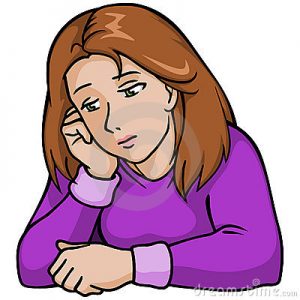The lonely person perceives that no one cares, that no one wants to help. He or she feels trapped and has little appreciation of how to overcome the perceived situation.
Everyone has had periods of feeling alone – a child went off to college, a friend moved away, a spouse, parent or child or significant other died; they are many causes. Most people find ways to cope, to deal with the grief over time. But for many others, the loneliness that could be transitory becomes persistent with the perception that no one cares, understands or appreciates the depths of their distress. It is this conversion from temporary situational to long-term perceived loneliness that is of concern. Loneliness is much more common than generally appreciated.
Chronic loneliness is more common among older individuals. Temporary stresses in life that only transiently effect younger individuals can have a profound long-term impact among elders. Not only does being lonely inflict emotional discomfort, it also inhibits many key physiologic parameters leading to multiple disease states and an earlier death. Chronic loneliness is not just a negative feeling; it is as great a risk factor for disease and death as smoking, obesity, diabetes or high blood pressure. Despite all of this, loneliness is usually not appreciated as a serious health issue and goes unrecognized by the medical community. Worse, the lonely person perceives that others are no longer caring friends and so avoids them or subconsciously pushes them away – just the individuals that could be of most assistance.
Of course, we all like and want to be alone at times. That is perfectly normal, necessary and healthy.
Why do we feel lonely? It is actually an evolutionary characteristic that developed for self-protection. Our early ancestors needed a group for protection. Absent the group, the individual was at grave risk. The feeling of “social pain” evolved to alert the person to attend to group interactions. Consider that even today, banishment from a tight knit community or religious group inflicts striking emotional pain.
Perceived loneliness negatively impacts many cellular activities so that inflammation is heightened, immune function suppressed and the aging process is accelerated. In short, perceived loneliness is very bad not only for our social but also our physical health.
The interesting observation is that lonely people often believe that they are tending to their social relationships when just the opposite is closer to the truth. Others sense a rejection just as does the lonely person. This dynamic creates a downward spiral of greater and greater separation from just the people who could and would most like to assist.
I have written in Longevity Decoded – The 7 Keys to Healthy Aging of the critical importance of social engagement. Healthy connections with others literally slow the aging process; but loneliness and its implications does just the opposite. Feelings of connectedness reduce our anxieties and stresses; they are amplified in the chronically lonely.
Having friends, places to interact, dinner out options, activities, etc. are necessary to help the lonely person but not sufficient because his or her issue is a perception of reality, not reality itself. What can be done?
First, it is important to recognize that most individuals with perceptual loneliness will not reach out for help. After all, their perception is that no one wants to help or at least no one appreciates their situation. So, it is incumbent upon all of us, as a community, to reach out to them. Perhaps just a few words in the hall, the neighborhood, the grocery store or wherever, remembering a birthday, positive comments about clothing, an invite to dinner or tea. Small gestures first, larger next.
Because simple interactions will not resolve perceived loneliness, what is necessary. Many people need cognitive behavioral therapy, i.e., a process that helps convert the negative assumptions to the often positive reality. There are many professional resources to help –primary care physicians and nurse practitioners unfortunately may not be fully aware of the implications of loneliness, how to diagnose and measure it (the UCLA Loneliness score) nor how to help. But they can learn. Mental health counselors and social workers are more likely to be trained to assist. Of course, they can only help if they know there is a person in need. If you suffer from loneliness, feel free to ask for assistance. Professionals in your community are there for you and will be delighted to engage. Unfortunately, most lonely people, even though they may know that professionals are present, will not reach out. That is part of the basic nature of perceived chronic loneliness. It follows that for the rest of us, if you are aware of someone who is lonely, you can encourage that person to avail him or herself of the local resources. Alternatively, with that person’s permission, you could call their doctor or a mental health professional or social worker and set up a first appointment, maybe even drive your friend to the appointment.
Remembering that loneliness is not only socially immobilizing but incredibly adverse to health it follows that, yes, we do need to be our brother’s keeper; as members of a community, it behooves us to help our neighbors as much as possible.

